Interest in sustainable living and innovative design has spurred a growing trend in the housing industry: the use of shipping containers as building blocks for homes. These steel containers, once used for transporting goods across continents, are being repurposed into modern, stylish, and environmentally-friendly residences. The attractiveness of shipping container homes lies not only in their unique aesthetic appeal but also in their cost-effectiveness and speed of construction. They are relatively inexpensive, with prices for the containers themselves ranging between $1,500 and $5,000, providing a much more affordable foundation than traditional building materials.
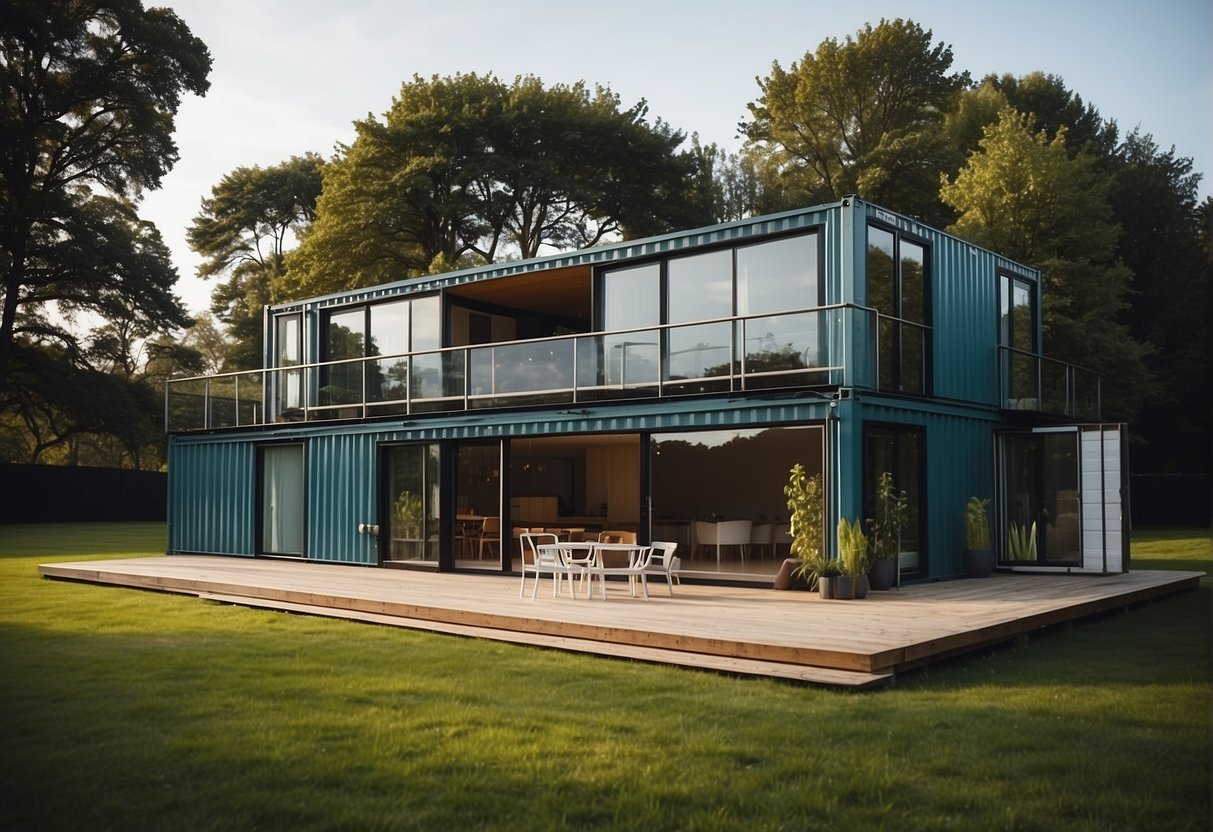
Architects and builders are creatively transforming these corrugated steel boxes into spaces that are both functional and livable, with some being assembled and completed in a fraction of the time it takes to build a conventional house. These container homes cater to a variety of lifestyles, from minimalist single-unit dwellings to elaborate multi-container retreats. The versatility of the container allows for an array of design options and can meet diverse homeowner needs, whether it’s a compact studio nestled in a serene woodland setting or a floating student housing project with prime views designed by visionary architect Bjarke Ingels.
Furthermore, the shipping container home movement is cementing its place in the real estate market with the potential for significant growth. The global shipping container homes market is expected to reach sizable figures by the mid-2020s, illustrating the scalability and enduring interest in this form of alternative housing. With their blend of sustainability, affordability, and modern design, shipping container homes are an exciting frontier for those looking to challenge traditional paradigms of living spaces, exemplifying a forward-thinking approach to residential architecture.
The Appeal of Container Homes
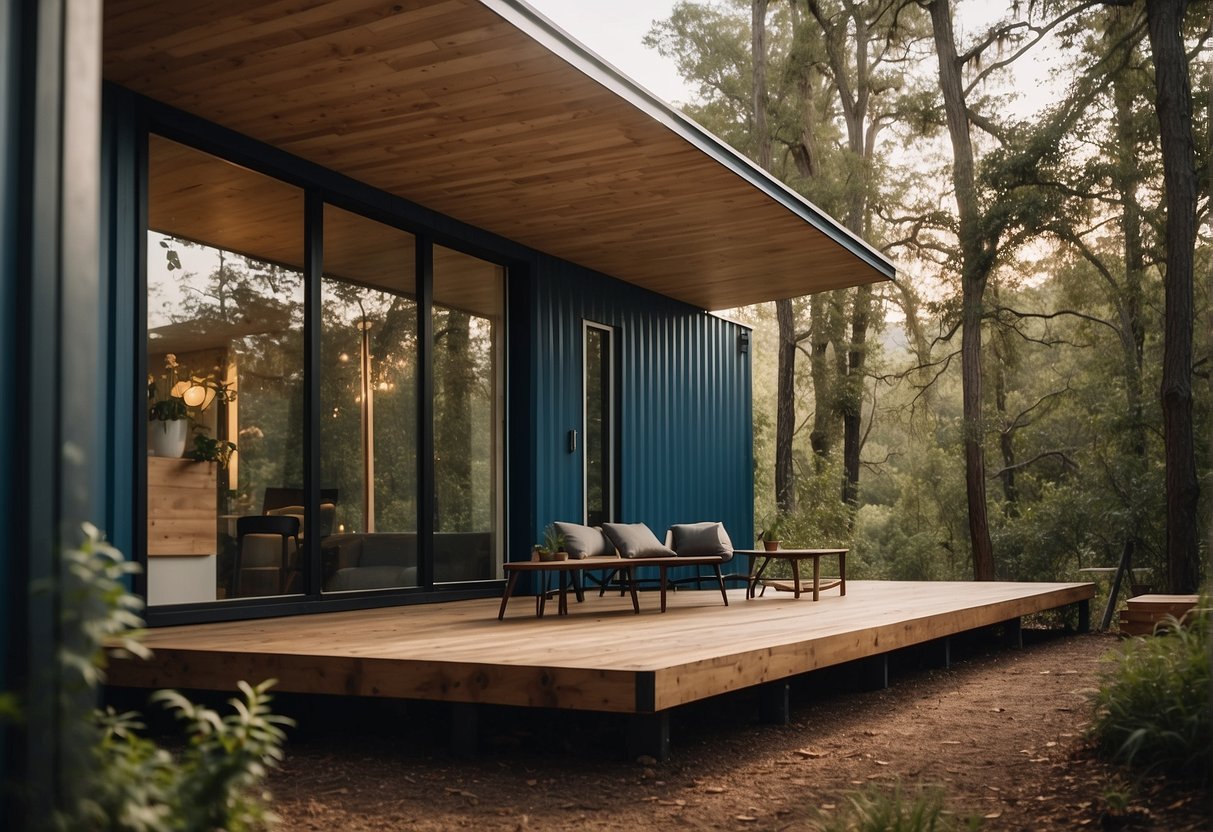
Container homes have emerged as a notable trend in sustainable living, offering an innovative blend of eco-friendliness, cost-effectiveness, and design versatility. These steel structures provide a surprising amount of durability and adaptability, reshaping the landscape of modern housing.
Eco-Friendly Aspects
Shipping container homes stand out for their sustainable qualities. The repurposing of used containers reduces waste and minimizes the demand for new construction materials. Moreover, these homes are often paired with eco-friendly insulation materials and renewable energy sources like solar panels, enhancing their green credentials. It’s not just about reusing materials, though; the energy efficiency of these homes is often superior to conventional construction.
- Recycling: Repurposing shipping containers significantly cut down on industrial waste.
- Insulation: Advanced, sustainable insulation methods reduce energy consumption.
- Renewable Energy: Integration with systems like solar panels promotes a smaller carbon footprint.
Affordability and Durability
The affordability of container homes is a major draw. A basic model can be significantly more affordable than traditional homes, and even with customization, they often remain cost-effective. Many are surprised by the durability of these structures; the original design of shipping containers to withstand harsh weather conditions translates into strong and long-lasting homes, capable of resisting extreme environments.
- Cost: A basic container home can start at prices as low as $10,000.
- Strength: Their steel composition and build can endure severe weather, exemplifying long-term durability.
Versatility in Design
The versatility in design is perhaps one of the most exciting features of container homes. From compact, single-container studios to expansive multi-container family homes, the possibilities are nearly limitless. Creative architects and designers are continually pushing the boundaries, forming incredibly unique homes that cater to a broad range of styles and preferences.
- Modular Nature: Containers can be easily stacked and combined for various designs.
- Customization: Homeowners can tailor container homes to their specific design tastes, from minimalist to luxurious.
Each aspect of a container home, from its eco-friendly nature to its affordability and durability, not forgetting the design versatility, adds to the increasing popularity of this sustainable living option. They showcase how innovation and sustainability can go hand-in-hand in the pursuit of affordable and stylish housing solutions.
Essential Design Considerations
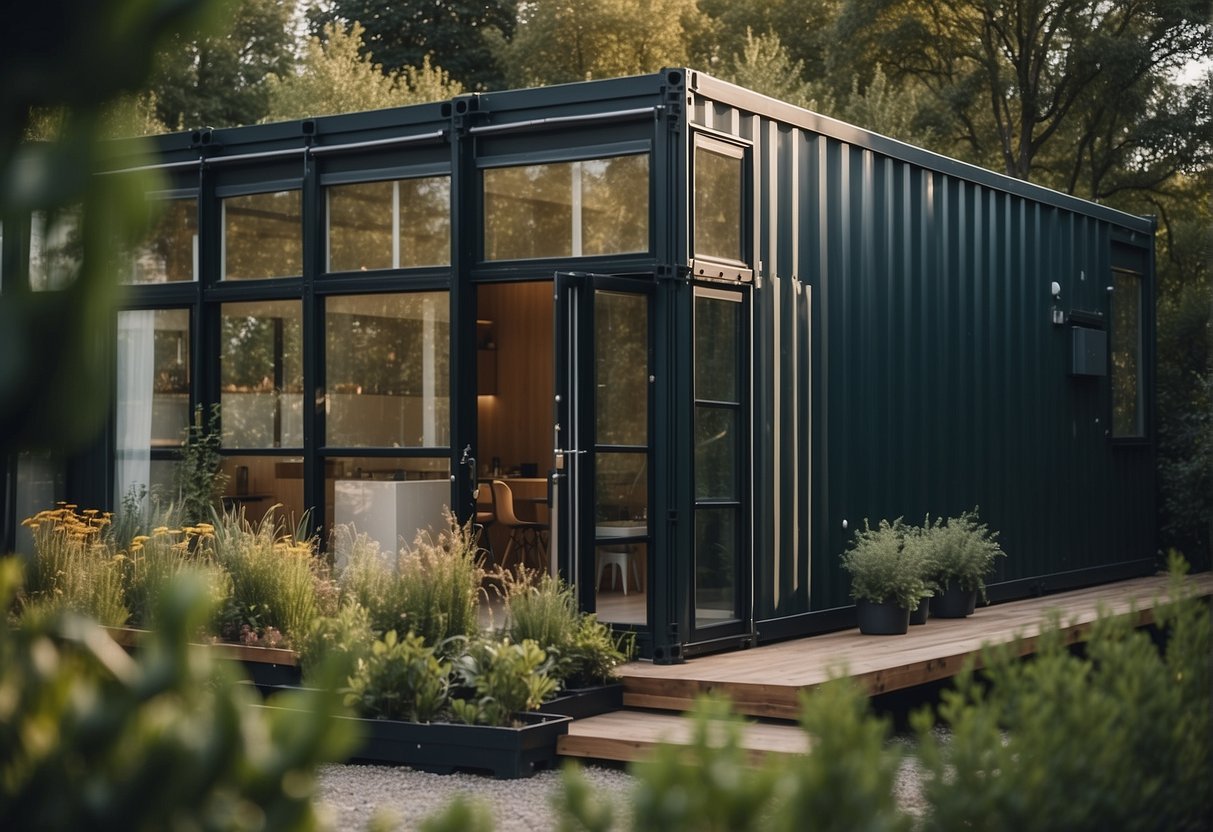
When tackling a project as unique as a house from containers, it’s crucial to pay attention to the core attributes that will ensure both the functionality and the aesthetics of the end product. From the robust skeleton of shipping containers to the intrinsic elements of a floor plan, every decision impacts the livability of these innovative homes.
Selecting Your Shipping Containers
Choosing the right shipping container is the first step toward a successful build. One must consider the two standard sizes, typically 20 feet by 8 feet or 40 feet by 8 feet, and decide which suits their space requirements best. High cube containers, offering additional height, present an excellent option for those needing more vertical space. One must carefully inspect the condition of used containers to ensure structural integrity; a weathered container may be charming but should not compromise safety or durability.
Planning Your Home Design in Detail
Floor Plans and Layout Optimization
Crafting a floor plan for shipping container homes is akin to solving a spatial puzzle. Maximizing the use of space without feeling constricted is the goal. It’s advantageous to amalgamate containers in creative formations to carve out areas for different functions—think stacking them for a two-story effect or placing them side by side for a more expansive layout. Keeping in mind the layout is pivotal for flow between living areas.
Floor Plan Example
| Container Size | Function | Features |
|---|---|---|
| 20′ x 8′ | Bedroom | Skylight for natural lighting |
| 40′ x 8′ | Living/Dining | Open-concept, modular furniture |
Maximizing Your Container Space
Incorporating Light and Insulation
The emphasis on light and insulation cannot be overstated in shipping container homes. Strategically placed windows, glass doors, and skylights are essential to flood the space with natural light and reduce the need for artificial illumination. When it comes to insulation, it serves as a bulwark against extreme temperatures, making the home comfortable all year round. Both spray foam insulation and rigid panels are popular choices, each with its own benefits for temperature control and moisture resistance.
Key Insulation Types
- Spray Foam: Seals tight spaces, provides high R-value
- Rigid Panels: Easy to install, effective for walls and ceiling
Building Your Dream Container Home
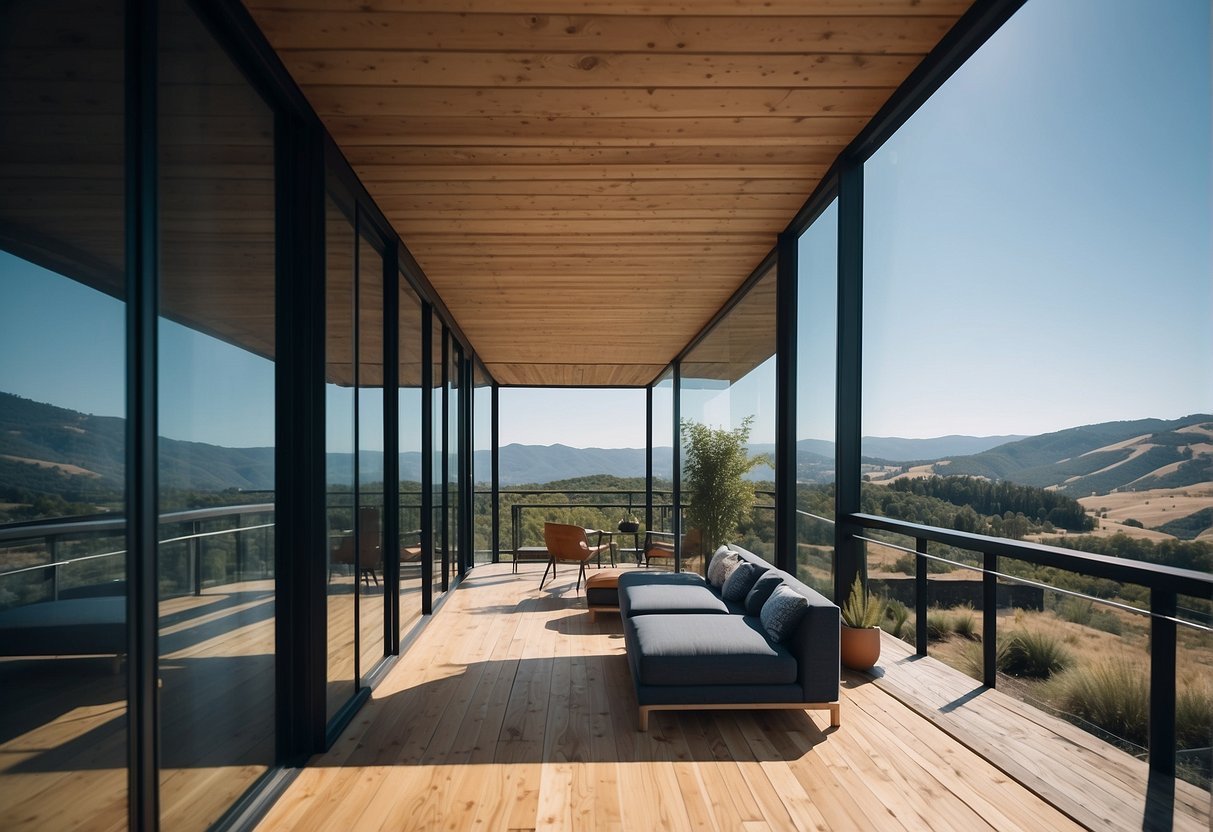
Building a dream home from shipping containers is an exciting venture that combines creativity with sustainability. One navigates through policies and collaborates with experts or embarks on a DIY journey to bring their unique vision to life.
Understanding Building Codes and Permits
Before embarking on the construction of a shipping container home, it’s paramount to understand the local building codes and regulations. Each locality has its own set of rules that dictate the do’s and don’ts of residential construction. These codes ensure that the structure is safe and conforms to zoning laws. Acquiring the necessary permits is a critical first step; neglecting this stage can lead to costly fines and delays.
The Role of Container Home Builders
Container home builders are integral in transforming the vision of a custom home into reality. These companies specialize in retrofitting shipping containers to meet a homeowner’s specific needs. They offer invaluable expertise in design, construction, and often assist in navigating the complexities of building codes. By collaborating with container home builders, one can ensure their home is both aesthetically pleasing and structurally sound.
DIY Versus Professional Custom Builds
When it comes to constructing a container home, homeowners face the choice between a DIY container home and a professional custom build. DIY projects can be incredibly rewarding and cost-effective, but they come with a steep learning curve and significant time investment. On the other hand, professional custom builds, while usually more expensive, provide peace of mind through professional guidance and construction expertise. This path ensures that the dream home doesn’t just look great but is also built to last.
Interior and Exterior Customizations
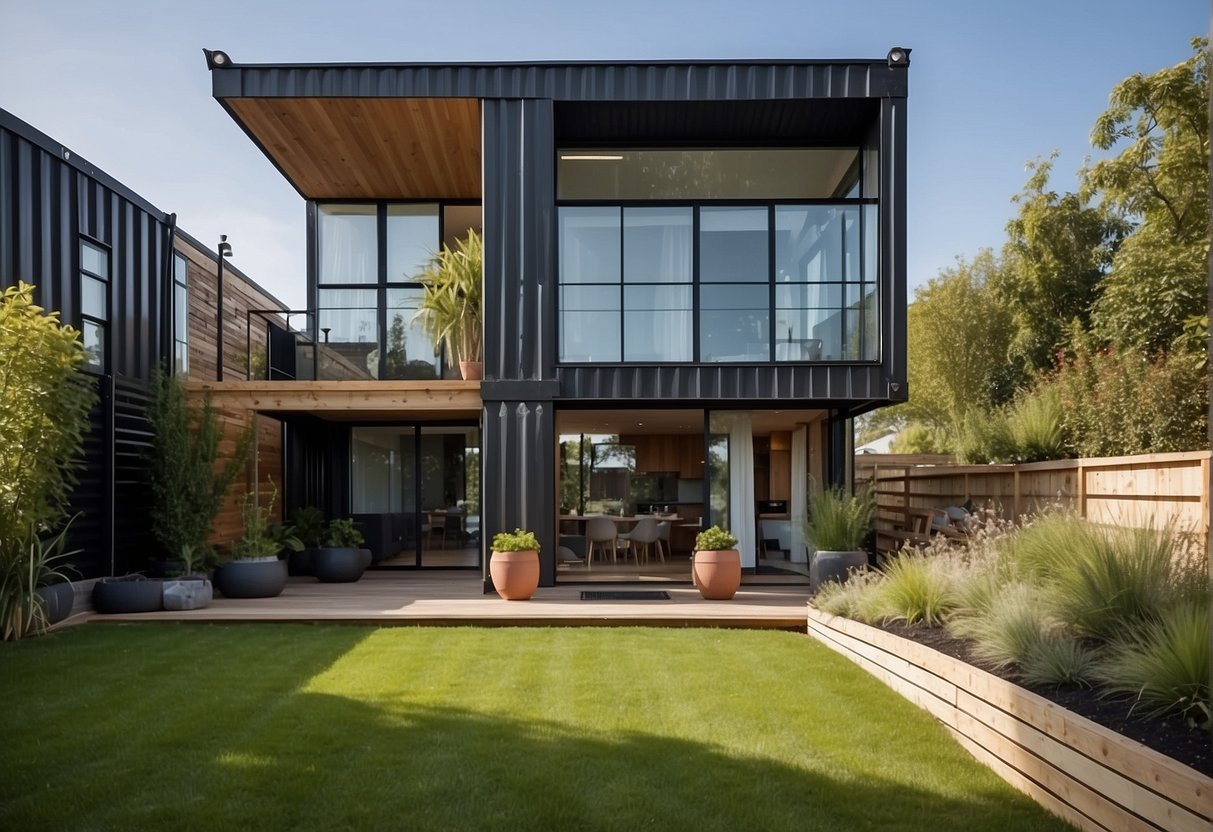
Personalizing a container home offers limitless opportunities. They can scale the concept of living spaces with stylish interiors and innovative exteriors that truly reflect their unique aesthetics and functional demands.
Creating a Stylish and Functional Interior
Inside a container home, one can maximize space with clever design choices. They often select sliding or pocket doors to preserve floor space, potentially more so in the more private quarters like the bedroom and bathroom. For a touch of elegance and the illusion of a more expansive area, a strategic placement of mirrors does wonders. A well-designed kitchen space not only embraces style but marries it with efficiency, featuring perhaps a sleek island or compact, state-of-the-art appliances.
Living areas, assumingly the heart of the home, benefit from large windows that flood the space with natural light and offer stunning views. Incorporating such elements not only creates an inviting atmosphere but also brings an elegant simplicity to one’s daily living experience.
| Room | Design Element | Benefit |
|---|---|---|
| Kitchen | Compact appliances | Saves space, modern look |
| Bedroom | Space-saving furniture | Maximizes space, efficient |
| Living Area | Large windows | Natural light, open feel |
| Bathroom | Full bathroom features | Full functionality in small space |
A full bathroom, despite the limited space in a container home, is achievable with smart layouts and modern fixtures that provide both comfort and style. Furthermore, the bedroom can serve as a tranquil sanctuary, balancing coziness and sophistication.
Exterior Modifications for Enhanced Living
Externally, container homes might appear simple, yet they hold a spectrum of potential enhancements. Owners frequently opt to install decks or patios, effectively extending the living space outdoors. These spaces are ideal for social gatherings or a quiet evening under the stars. The possibility of a rooftop deck introduces an exciting new level of outdoor entertainment and relaxation.
Outdoor space is considered just as important as indoor space in these innovative homes. It’s not only about the container’s charm but how one leverages it to achieve a balance between aesthetics and functionality. Large windows aren’t exclusive to the interior; they contribute to the external appeal of the home, reflecting a modern and open design.
Styling a container home, both indoors and out, speaks to one’s personal flair and the desire for a living area that’s as practical as it is visually engaging. Whether it’s an added balcony to enjoy a morning coffee or an outdoor kitchen for summer barbecues, these homes enthrall with their endless customization possibilities.
Innovative Container Home Features

Container homes have revolutionized the way people think about residential spaces, offering unique advantages and creative design solutions. They embody the convergence of sustainability, efficiency, and modern technological integrations.
Maximizing Small Spaces
In the realm of tiny house living, container homes stand out for their ingenious use of space. Every square inch is strategically utilized to provide maximal functionality. For example, movable walls and multipurpose furniture make a 355 sq ft shipping container home vastly more efficient, transforming a single room into a multi-use area that can function as a bedroom, dining room, and workspace as needed.
Sustainability and Green Living
Eco-friendly and sustainable living is at the core of the shipping container home movement. These homes often incorporate recycled shipping containers, drastically reducing the carbon footprint associated with new construction materials. Moreover, many container homes include features like solar panels to support an off-grid lifestyle and rainwater harvesting systems, further contributing to an environmentally friendly living space.
Technological Advances and Smart Homes
Smart homes embrace technological advances, and container homes are no exception. Innovative designs integrate sophisticated systems that allow homeowners to control lighting, temperature, and security with their smartphones. Additionally, custom container living solutions often come with prefab options that include smart appliances, ensuring that convenience and modern comforts are woven into the fabric of the home.
Examples of Container Home Excellence
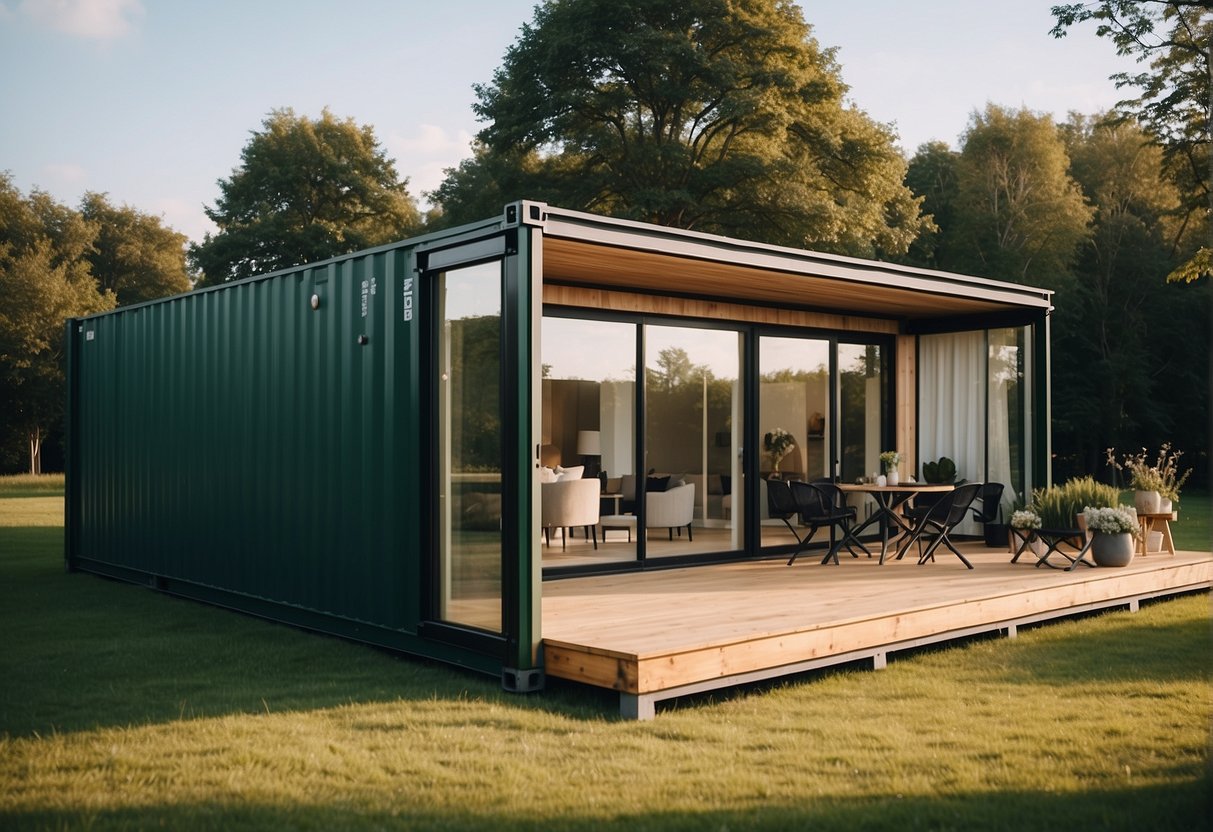
Innovative design and sustainability come together in container homes, offering a unique take on architecture and living spaces. These dwellings are famed for their versatility and eco-friendliness, with examples ranging from luxurious abodes to cleverly designed budget-friendly habitats.
Celebrated Container Home Models
Honomobo is at the forefront of designing sleek, modern container homes that are both beautiful and functional. Their HO Series homes, utilizing multiple containers, can be configured to the buyer’s needs, showcasing the customizable nature of container constructions.
- HO4+ : Composed of four shipping containers, this model offers a spacious interior with two bedrooms and a full kitchen.
- HO2 : An ideal studio layout derived from a single shipping container, perfect for those embracing minimalist living.
Backcountry Containers crafts container homes that exude charm and efficiency. Notable is their 20-foot shipping container home that surprisingly includes a bedroom area, kitchen, and bathroom.
- Unique Features : Models feature options like bold paint colors and rooftop decks, creating a fun and inviting atmosphere.
Kubed Living presents a range of stacked container homes, which not only make a strong visual impact but also efficiently utilize space.
- The Pasadena : An example that stands out with its two-story design, built from six shipping containers, offering ample living space.
Global Inspirations
Casa Incubo in Costa Rica is a celebrated example of container home beauty, crafted from eight 40-foot containers. This residence excellently integrates into its natural surroundings while also functioning as an environmentally conscious statement.
- Design Philosophy : The home achieves an industrial yet harmonious aesthetic, complemented by abundant solar panels that marry functionality with clean energy.
Containers of Hope, another Costa Rican gem, presents a more budget-conscious approach without sacrificing style. Built from two 40-foot shipping containers, it stands as a testimony to affordability meeting ingenuity in home construction.
- Smart Design : The use of stacked containers creates a spacious interior and embraces the picturesque views of its locale.
Auxiliary Uses for Container Spaces
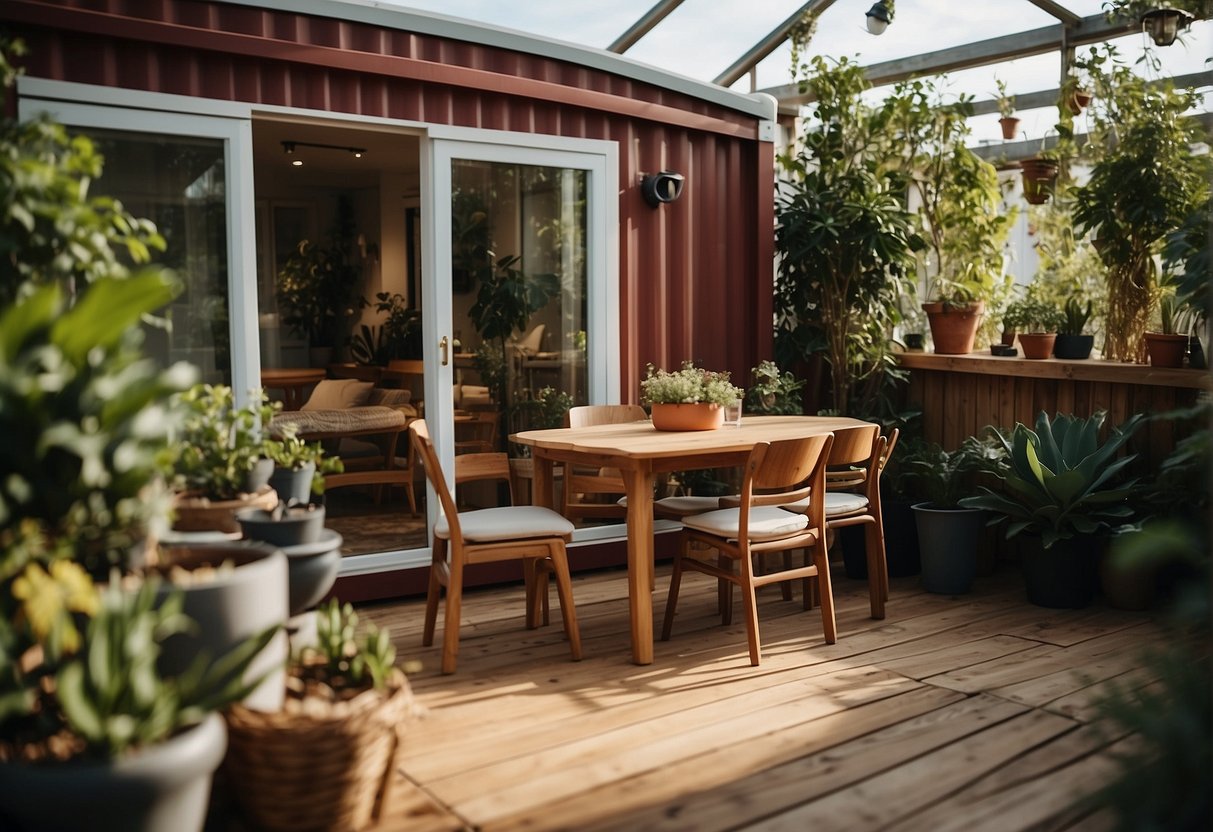
Container spaces have rapidly evolved, breaking new ground in functionality and serving a plethora of purposes beyond just living quarters. They offer much more than a place to sleep—they are transformative, adaptable, and bursting with potential for a variety of uses.
Expanding Beyond the Traditional Home
Shipping containers are embracing their roles as dynamic, portable home offices, reflecting the growing trend of remote work. Designed for flexibility, these units can be outfitted with all the essentials of a productive workspace, while also ensuring privacy. Offering an alternative to the typical home environment, shipping containers can be configured with multiple bedrooms, meeting the needs of families looking for that extra space without having to move or build costly extensions.
Creative Commercial and Community Projects
The utilitarian form of shipping containers is a blank canvas for commercial projects. They open avenues for entrepreneurs to launch pop-up shops, intimate cafes, or innovative art studios. Their portability factor is a game-changer for businesses aiming for a unique presence at multiple locations. Additionally, organizations are harnessing these structures to create community centers or class spaces that hold the power to enliven neighborhoods.
Turning to the trend of alternative living spaces, shipping containers are increasingly popular in the Airbnb rental market. Hosts find that these units offer a unique selling point that captivates travelers seeking novel accommodations. Energy abounds in the way these containers are continuously being reimagined to energize and diversify the real estate landscape.
Navigating Logistics and Maintenance

When it comes to building a house from containers, one must strategically manage the logistics of transportation and setup, as well as ensure diligent ongoing care and maintenance to preserve the unique robustness of steel shipping containers.
Transportation and Setup
Transporting steel shipping containers is an adventure in logistics. They will likely make a journey via cargo ships before hitting the road to their final destination. Here, their portability shines, but it’s essential to plan meticulously. At the setup site, determining a level foundation is crucial; one must consider plumbing and electricity hookups from the outset. It’s about being precise and forward-thinking.
- Coordinate with Large Trucks: Containers need accommodation for size and weight during transport.
- Crane or Forklift for Placement: Hefty machinery is required to situate the container accurately.
Ongoing Care and Upkeep
Once the container home is in place, maintaining its durability is a commitment not to be taken lightly. Containers are built with corrosion-resistant steel, but that doesn’t eliminate the risk of rust over time. They thrive when a homeowner is proactive about maintenance.
- Regular Inspections: Routinely check for signs of rust or damage, especially post-transit.
- Protective Coatings: Apply protective paint or coatings to combat weather elements.
Insulation: Given the steel structure, incorporating adequate insulation is key to turning a container into a comfortable home.
Electric systems and fixtures should be checked regularly by a professional to ensure they remain in tip-top shape, keeping the house both safe and functional.
